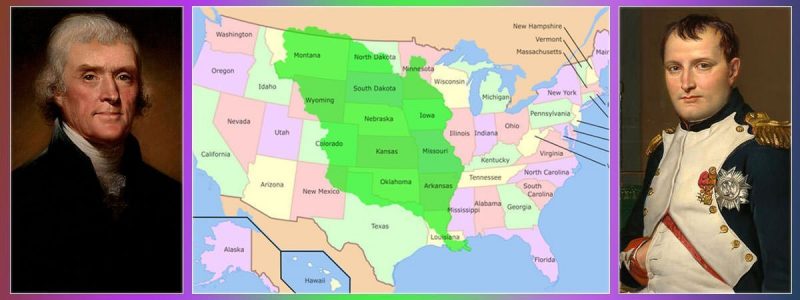The Louisiana Purchase was indeed a brokered deal! Here is the story…
“Real Estate” or a more common term “property”, has been used since ages to demarcate land and
buildings including the associated natural resources. Considered to be a great possession, many
people invest in real estate with some even performing trade on property. Nowadays, referred to
as an established industry, real estate however has a deeper root in the history of the United States. Things
date back to the time when the federal government sold and granted land to private owners after the
Revolutionary War. Most notably, in 1862, the Homestead Act was laid down, which allowed people to
own land for at least five years while improvising and developing the land in return. But before we
mark the mid of the 19th century as the beginning of real estate, the Louisiana Purchase brings forth an
interesting turn.
What most of us refer to as one of the greatest land deals in the history of the U.S., the Louisiana Purchase
was more than the acquisition of approximately 827,000 square miles of land by the US from the
French. Many of us are ignorant of the fact that the purchase was facilitated by people, whom we
nowadays call agents of real estate. Stepping back to 1803 brings us to the time when the largest
territorial gain in the history of U.S. happened that nearly doubled the size of the country. Louisiana
had remained in the control of Spain for nearly forty years until the ruling powers were handed over
to the French on November 30, 1803. Within a span of three weeks, December 20 marked the date
when the U.S. formally gained the power of the territory.
History has it that a failure of the French army in suppressing a slave revolution in Haiti added by
economic difficulties led Napoleon to the sell-off the land piece. As part of the lesser-known facts,
Louisiana Purchase formed part of the first Gulf-front real estate transaction closed by Thomas
Jefferson, who was once a surveyor. The then Chancellor, Robert Livingston along with Fulwar
Skipwith, a Virginia tobacco, and wine merchant acted as the negotiators in the deal. The deal itself
made the Livingston family one of the greatest private beneficiaries of the purchase. Jefferson is
referred to as the mastermind behind this deal who, due to his extreme strategic visioning and
calibrated tactical approaches, was able to settle the transaction at an overwhelmingly cheap price of
three cents an acre. He later commissioned Meriwether Lewis and William Clark to perform a deep
exploration of the acquired territory that exceeded 8,000 miles and came to be known as the Lewis
and Clark Expedition.
Though the deal helped the U.S. gain a major landmass, the wordings of the signed treaty failed to carve
the exact boundaries of the purchase. Further questions related to the constitutionality of the purchase
gave way to thoughts of an amendment to the Constitution in order to legalize the transaction. The
boundary lines were not settled until the final purchase of Florida from Spain in 1819 which finalized
the southwest frontier. The northern boundary was amicably established by an Anglo-American
convention a year ago in 1818. Thus began the foundation of the real estate industry embarked by a
deal that is more eminent from the perspective of the land treaty.

